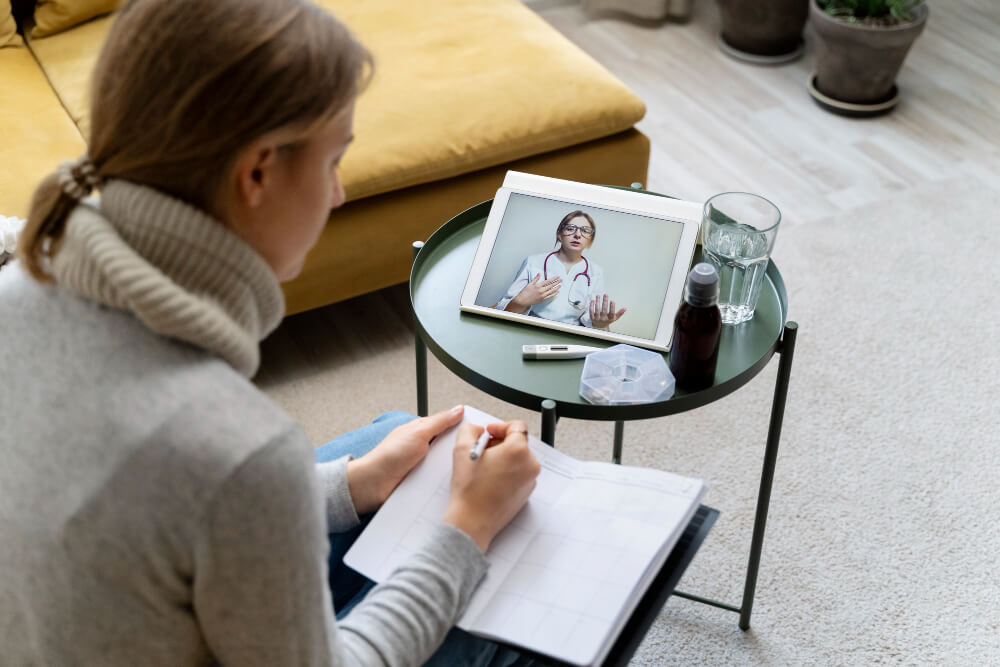Rethink the Recheck: Embracing Telehealth for Convenient Injury Follow-Ups
The days of scheduling doctor’s appointments weeks in advance and enduring lengthy waiting rooms for injury rechecks might be nearing an end. Telehealth, the use of telecommunications technology for remote healthcare delivery, offers a convenient and efficient alternative for post-injury follow-ups. This article explores how telehealth can revolutionize your injury recheck experience.
Demystifying Telehealth: How Virtual Consultations Work
Technology Platforms:
Telehealth consultations utilize various communication platforms like secure video conferencing apps or online patient portals. These platforms allow for real-time interaction between you and your healthcare provider, facilitating a virtual examination and discussion of your injury’s progress.
The Consultation Process:
During a telehealth injury recheck, your healthcare provider will:
- Inquire about your progress since your initial injury assessment.
- Discuss any ongoing symptoms or concerns you might have.
- Potentially review pictures or videos of the injured area, if it can be safely captured.
- Provide guidance on wound care, pain management, or physical therapy exercises.
- Determine if an in-person follow-up is necessary for further evaluation.
Benefits for Patients:
Telehealth offers numerous advantages for patients seeking injury rechecks:
- Convenience: Schedule appointments at your preferred time and location, eliminating the need to travel to a doctor’s office.
- Reduced Waiting Times: Skip the waiting room! Telehealth consultations often start promptly, saving you valuable time.
- Improved Accessibility: Telehealth facilitates easier access to healthcare, especially for individuals in rural areas or with limited mobility.
- Potential Cost Savings: Telehealth consultations can be more affordable than traditional office visits, reducing your out-of-pocket expenses.
Is Telehealth Right for Your Injury Recheck? Evaluating Suitability
Suitable Injuries for Telehealth Follow-Ups:
Telehealth is well-suited for rechecks of various non-emergency injuries, such as:
- Minor sprains and strains: Follow-up discussions about pain management, healing progress, and physical therapy exercises.
- Skin conditions: Visual assessment of wound healing, progress discussions, and medication adjustments.
- Post-surgical check-ins: Discussion of recovery progress, pain management, and potential concerns following a surgery.
- Allergic reactions: Assessment of symptoms and discussion of treatment options.
- Upper respiratory infections: Reviewing symptoms and discussing medication adjustments as needed.
When an In-Person Appointment Might Be Necessary:
While telehealth is beneficial for many injuries, it’s important to understand its limitations. If your injury requires:
- Physical examination: In some cases, a hands-on examination by a healthcare provider might be necessary to assess the injury accurately.
- Diagnostic tests: X-rays, ultrasounds, or other diagnostic procedures typically require an in-person visit.
- Stitches or wound closure: Treatment involving stitches or wound closure usually requires an in-office visit.
Open Communication is Key:
Always discuss the suitability of a telehealth recheck with your healthcare provider. If your injury requires an in-person examination, they will advise you accordingly.
The Future of Injury Care: Telehealth’s Advantages for Healthcare Providers
Improved Efficiency:
Telehealth rechecks allow healthcare providers to manage their time more efficiently, freeing up valuable time for in-person appointments with patients requiring more complex care.
Enhanced Patient Access:
Telehealth expands access to care for patients who might have difficulty traveling to an office due to distance, transportation limitations, or childcare needs.
Potential Cost Reductions:
Telehealth consultations can potentially reduce overall healthcare costs by eliminating unnecessary office visits and streamlining processes.
Improved Patient Engagement:
Telehealth can facilitate more frequent patient interaction, allowing for closer monitoring of their recovery and promoting better patient engagement in their healthcare journey.


